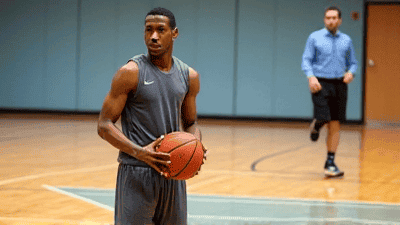
Food has always held a pivotal role in cinema, serving as a powerful storytelling device that can evoke emotions, set the tone, and even propel the narrative forward. From sumptuous banquets in historical epics to decadent meals in romantic comedies, the portrayal of food on screen can profoundly impact the audience's experience. However, what many viewers may not realize is that the food we see in movies is often not real. The art of creating fake movie food has evolved into a specialized craft that combines artistry, engineering, and a touch of magic.
The Importance of Food in Film
Storytelling Through Food
Food is more than just sustenance; it carries cultural significance and emotional weight, making it a powerful tool for storytelling. In film, food can reveal character traits, relationships, and even conflicts. Consider the way a shared meal can symbolize intimacy or the absence of food as a reflection of hardship. Filmmakers cleverly use food to convey subtext and deepen the viewer's understanding of character dynamics.
A scene may feature a lavish feast to indicate wealth and opulence, while a simple bowl of soup can evoke feelings of nostalgia and comfort. The meticulous care taken in depicting food helps to immerse the audience in the story's world, creating a sensory experience that enhances engagement.
Creating Desire and Appetite
One of the primary goals of depicting food in cinema is to stir the viewers' appetites. Juicy burgers, glistening pastries, and vibrant salads can unsatisfyingly tantalize our senses. This effect is not merely about hunger; it’s about drawing the audience into the experience by making them feel as though they can taste and smell the food.
Cinematographers and directors often use specific angles, lighting, and color palettes to make the food look as appetizing as possible. Whether it’s a romantic dinner setting or a bustling kitchen scene, food becomes an essential part of the visual narrative, helping to evoke specific feelings and moods.
The Art of Creating Fake Food

Understanding the Basics
Before diving into the techniques of making fake movie food, it is essential to understand that it is often created from materials that mimic the appearance and textures of real food without being consumable. The goal is to ensure that the food looks appealing on camera while remaining manageable for the actors and crew.
Materials Used
Fake food is typically crafted from:
- Plastic and Silicone: These materials can be molded and painted to create a realistic appearance. They are widely used for items like burgers, fruits, and desserts.
- Resin: This material can encapsulate food items to preserve their appearance for extended periods. It is commonly used for drinks and liquids that require a crystal-clear finish.
- Food Props: Some fake food items may incorporate real food that has been preserved or modified to withstand filming conditions. For example, a pie crust might be made of pastry shells, but the filling could be a decorative gel.
Techniques for Crafting Fake Food
1. Mold Making
Creating realistic fake food often begins with mold making. This process involves crafting molds from original food items, ensuring that every detail is captured. Mold makers use materials like silicone or plaster to create the molds, which can then be used to cast replicas.
2. Painting and Detailing
Once the food pieces are cast, they require painting and detailing to enhance their realism. Artists use a variety of techniques, such as airbrushing, dry brushing, and hand painting, to achieve the desired appearance. They pay close attention to color variations, shadows, and textures to ensure that the fake food looks as lifelike as possible.
3. Adding Textures
Texture plays a critical role in the perception of food. Fake food artisans often use additives like gels, glazes, and textured materials to replicate the surfaces of real food. For example, a juicy cheeseburger might have a shiny glaze applied to the patty to mimic grease, while vegetables may be created using textured paint to resemble natural skin.
4. Utilizing Props and Accessories
Fake food often requires props and accessories to complete the scene. Items like plates, utensils, and table settings can enhance the visual appeal. Additionally, incorporating real food components—like a fresh garnish or a crouton—can help integrate fake food into its environment.
5. Temperature Effects
To evoke appetizing sensations, filmmakers may use heat or cooling effects. For example, steam may be introduced to a hot dish to signify freshness, while chilled items can be misted with water to give the impression of being freshly pulled from the fridge.
Collaboration with Food Specialists
Creating fake food is often a collaborative effort, involving food stylists, prop makers, and set decorators. Food stylists are responsible for preparing and presenting food in a way that looks visually stunning on camera. They work closely with directors and cinematographers to ensure that the food aligns with the overall aesthetic of the film.
Food stylists often have culinary training, enabling them to understand the intricacies of presentation. Their expertise allows them to improvise and adapt in real-time during shoots, ensuring that food items maintain their visual appeal throughout filming.
Why Fake Food Looks So Delicious on Screen
Cinematic Techniques
The magic of fake food is not just in its preparation; it also involves cinematic techniques that enhance its appearance. Here are some essential aspects that contribute to why fake food looks so visually appealing in movies:
1. Lighting
Lighting plays a crucial role in making food appear appetizing. Soft, diffused lighting can enhance the colors and textures of food, creating a warm and inviting atmosphere. Key lights often highlight specific features, giving the appearance of glossiness and freshness. Filmmakers may also use colored gels to evoke certain moods and emotions.
2. Camera Angles
The camera angle can significantly influence how food is perceived on screen. Close-ups can highlight textures, while wide shots may provide context. Filmmakers often employ various angles to showcase food in its most enticing form, inviting viewers to engage with the visual feast.
3. Slow Motion
Slow-motion techniques can elevate food presentations by drawing attention to specific elements, such as a perfectly melted cheese stretching or a delicious sauce being drizzled. This dramatic effect can heighten the sense of indulgence and make it harder for viewers to resist.
4. Composition
Cinematography often employs principles of composition to frame food in aesthetically pleasing ways. The rule of thirds, leading lines, and symmetry can all enhance the visual appeal of food on screen, inviting the audience's eye and creating a sense of balance.
The Role of Sound
While visuals are integral, sound also plays a vital role in making food appealing on camera. The sound of sizzling, crunching, or bubbling liquids can amplify the sensory experience for viewers. These auditory cues engage audiences and enhance the overall allure of the food, making it feel more real and enticing.
Iconic Movie Foods and Their Representations

1. The Pie in "American Pie"
The infamous pie scene in "American Pie" exemplifies how food can become a culturally significant icon in film. The thought of making love to a pie raised eyebrows and became a staple reference in pop culture. The pie’s crust and filling were meticulously designed to amplify both the comedic and risqué elements of the scene, ensuring it resonated with audiences.
2. The Spaghetti Dish in "Lady and the Tramp"
The classic scene of Lady and the Tramp sharing spaghetti is nothing short of iconic. The visual appeal of perfectly twirled pasta and marinara sauce creates a romantic atmosphere. The food is not just a backdrop but serves to highlight the connection between the two characters, making it a memorable moment in cinematic history.
3. The Breakfast Spread in "The Breakfast Club"
In "The Breakfast Club," the breakfast spread showcases a variety of foods that represent the characters’ personalities and social backgrounds. From sugary pastries to healthy options, the food serves as a vehicle for dialogue and relationship dynamics, emphasizing the themes of class distinction and teenage identity.
4. The Thanksgiving Feast in "Planes, Trains and Automobiles"
The chaotic Thanksgiving dinner scene in "Planes, Trains and Automobiles" captures the humor and heart of the holiday season. The food, while humorously mishandled, serves as a symbol of togetherness. The visual chaos of the meal creates a sense of warmth and chaos, reflecting the emotions of the characters involved.
5. The Chocolate Factory in "Charlie and the Chocolate Factory"
The whimsical food creations in "Charlie and the Chocolate Factory" perfectly illustrate the fantastical elements of Tim Burton’s adaptation. The candy-coated landscapes and oversized desserts create an otherworldly appeal, stimulating viewers' imaginations and appetites alike.
The Impact of Fake Food in Marketing
Merchandising and Branding
The art of food presentation extends beyond film and into marketing, where visually appealing food ads have the potential to sway consumer behavior. The techniques used to create fake food for films often influence marketing strategies, ensuring that products look irresistible in advertisements.
Brands are known to work with food stylists and photographers to create Instagram-worthy images that draw in customers. The same principles of lighting, composition, and texture are applied, ensuring that food looks delectable and enticing.
Social Media Phenomenon
With the rise of social media, the portrayal of food has taken on new dimensions. Platforms like Instagram and TikTok have exploded with visually stunning food content, showcasing everything from beautifully plated dishes to extravagant food challenges. The emphasis on aesthetics has transformed the way restaurants and home cooks present their food, all while emphasizing the need for visual appeal.
Behind the Scenes: The Challenges of Creating Fake Food

Time Constraints
Creating fake food can be an intricate process that requires considerable time and effort. On set, however, there are often tight schedules that necessitate quick decision-making. Food stylists must be agile, adapting to the dynamic nature of production while ensuring that every food item remains camera-ready.
Temperature Control
Maintaining the integrity of food on set can be challenging, particularly when dealing with perishable items. Fake food often needs to withstand heat, humidity, or other environmental conditions that can affect its appearance. Stylists are adept at using techniques to control temperature, ensuring that food looks fresh and appetizing throughout the shoot.
Last-Minute Changes
Changes in direction or script can lead to last-minute alterations in food presentations. Food stylists must be ready to improvise and adapt quickly, ensuring that their creations still meet the demands of the scene despite alterations. The ability to pivot creatively is essential in food styling.
The Future of Fake Food in Film
Advancements in Technology
As technology continues to advance, the methods of creating fake food are likely to evolve as well. Innovations in 3D printing, augmented reality, and virtual reality may influence how food is designed and presented on screen. The potential for hyper-realistic food models opens new avenues for artistic expression in film.
Sustainability in Food Styling
The entertainment industry’s growing emphasis on sustainability may lead to changes in how fake food is produced and utilized. As environmental consciousness grows, there may be a push towards more sustainable materials and practices in creating fake food, minimizing waste while still achieving stunning visuals.
Interactive Dining Experiences
The intersection of film and dining has already begun to emerge, with themed restaurants and pop-up experiences becoming increasingly popular. The allure of cinematic food experiences presents a unique opportunity for chefs and filmmakers to collaborate, creating immersive dining events that allow audiences to enjoy the food directly from films they love.
Conclusion
The art of creating fake movie food is a fascinating blend of creativity, psychology, and technical skill. As a crucial element of storytelling, food enhances viewers’ experiences and evokes emotions that resonate with the audience. The techniques used to craft mouthwatering visuals ensure that fake food not only looks delicious on screen but also serves a deeper purpose in expressing narrative themes.
By understanding how fake food is made and what contributes to its appeal, we gain a greater appreciation for the role of food in film and media. As the industry evolves and embraces new technologies, we can anticipate even more innovative approaches to food presentation in the cinematic world. Ultimately, fake movie food serves as a reminder of how our senses, both visual and emotional, can be engaged in the most deliciously captivating ways.








